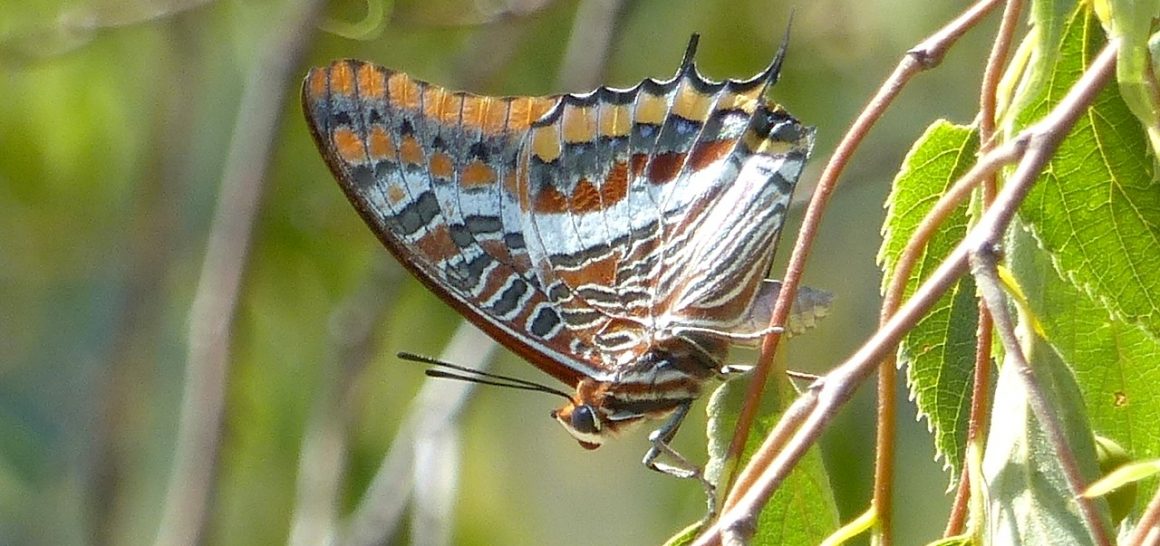
The Pyrénées-Orientales department is rich in early medieval religious foundations. One of the most striking is the abbey of Saint-Martin-du-Canigou, a Benedictine monastery founded in 1009 on the flanks of The Canigou. This high mountain (2,784 m /9137 ft) – once thought to be the highest in the Pyrenees – is of particular symbolic significance in this Catalan region, one that has changed ownership and allegiances many times over the centuries. Even now the Catalan flag predominates in public places.

The Abbey is pleasingly inaccessible. Leaving aside a precipitous donkey track down a cliff, there is an easier track that leads up from the little village of Casteil. On certain days, at certain times, this can be negotiated by going in a small trailer drawn by a kind of skinny quadbike. Or else, it’s shanks’s pony. The steep walk is said to take 30 – 50 minutes. You’d have to be fit to reach the abbey in less than half an hour. We took 45 minutes, overtaken at intervals by serious walkers with kit to match. And gratifyingly, we overtook several puffing, wheezing and (frankly) sweaty pilgrims in our turn.
A view, as if from the upper slopes of Canigou (Google)
Much of the trek is through woodland, with encounters with red squirrels, nuthatches, black redstarts and a surprising variety of butterfly species. The vertical rise from the village to the Abbey is well over 1000 feet, and the mountain air is sweet and clear. Apart from a small chapel on the way and the visitor centre, there are no buildings apart from the Abbey. Those with the energy left can climb higher to a promontory overlooking the Abbey, from which the postcard and guidebook view can be replicated (header image). However there is the added advantage of being able to take zoom photos.
The gorge on the left side gives a good idea of how precariously the Abbey is perched on the cliff top

Over the centuries, the Abbey has suffered earthquake damage, secularisation in the c18, and consequent abandonment by the monks. Thereafter, it fell into disrepair, then ruin. Most of the contents were dispersed. The buildings were then treated as a quarry. The wonderful and important capitals of the cloister were looted, as were the remaining sculptures.

And so the ruins were left for well over 100 years until, in 1902, a local Bishop of Catalan origin began the massive task of restoration. Thirty years later, the work was complete. The lower church – basically the crypt – was found to be largely undamaged, and is substantially as it was in the c11. Much of the upper church and the cloister was able to be reconstructed. The rest of the monastery buildings are early c20.

The Abbey is currently occupied by the Catholic Community of the Beatitudes. This is a remarkable charismatic order, not least because both consecrated men and women can be members, as can priests. Furthermore, it is inclusive of unconsecrated people – even families – who share the broad beliefs and aims of the community and their missionary activities in parishes and hospitals. We were shown around by a remarkably spritely and down-to-earth young nun (at one stage she high-fived me!).
The cloister deserves separate consideration, not least because of the wonderful capitals, some of which were, amazingly, recovered as the result of a diligent search for dispersed original material during the restoration.
 If you want to find out more about this remarkable place, it has its own website with plenty of information HERE
If you want to find out more about this remarkable place, it has its own website with plenty of information HERE




























































